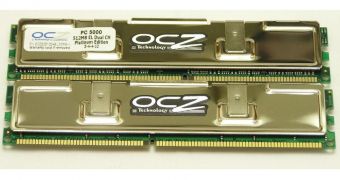The price of SSD devices has been on a downwards spiral ever since smaller SSD players thwarted to make their presence felt on the storage market. We’re sure that, had Intel remained the top SSD player, prices would have likely gone up with the excuse that HDDs had tripled in price due to Western Digital and Seagate’s duopoly.
Small companies struggling to get ahead would do just about anything to increase their market share and ensure healthy business in the industry. These kinds of companies are just trying to survive in the face of giants like Intel and are less greedy for huge and fast profits.
A clear example of such a company is SSD “hero” OCZ that has been able to execute flawlessly in the SSD business, while not chasing high or immediate profits.
The company’s current fiscal results that we discussed here mirror just that.
OCZ is heavily investing and reinvesting to be able to successfully compete in the market and increase its market share in both areas; general computer and server storage market and SSD market.
The impact SSDs have on the computer and server storage market seems to be quite serious and OCZ’s CEO, Ryan Petersen reportedly said that:
“It has always been our belief that SSD prices do not need to match those of hard disk drives on a per gigabyte basis in order to drive large scale adoption of SSDs. As such, it is becoming evident that SSDs are increasingly competing with hard disk drives in cost conscious market segment, a trend that is clearly positive for the SSD industry.”
The problem is that as prices get lower, the demand shifts towards higher capacity drives and those are considerably more expensive than 64 GB boot SSDs, while buyers are expecting the price decrease trend to continue.
Mr. Petersen believes that prices of SSDs that are using 25nm NAND flash have already reached rock bottom and that newer and smaller technologies are needed to allow further decreases.
These new technologies can be a smaller manufacturing process like 20nm or TLC (3bpc) or three-bits-per-cell technology, but these also come at a considerable cost.
The main problem is the decreased durability that comes in both cases is a very serious problem and SSD companies will have to invest in technologies that ensure at least a decent durability.
Therefore, readers looking to buy an SSD these days can go ahead and just buy it, as there aren’t many impressive deals and price cuts coming until winter.

 14 DAY TRIAL //
14 DAY TRIAL //